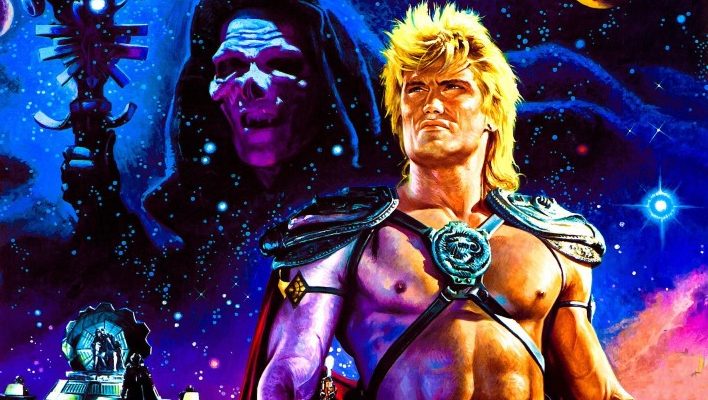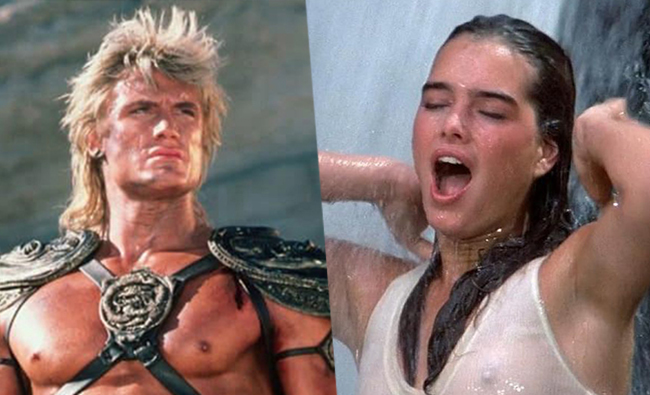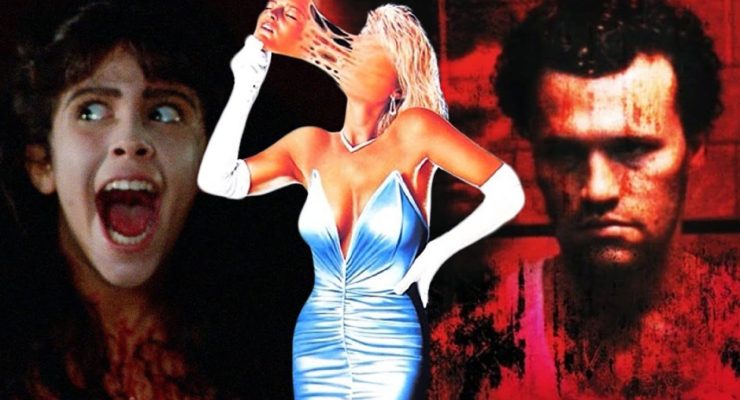Luke Owen looks back at Batman’s past…
As Saturday was Batman Day [you can read two other op-eds here and here] and following on from my look back at the evolution of Spider-Man and Daredevil‘s costumes (and the Batmobile), I thought it would be fun to look back at all the big screen and (some of ) the small screen versions of everyone’s favourite Dark Knight. Starting from the serials in the 1940s all the way through to Zack Snyder’s Batman who brands people.
But what makes the Bat Suit so iconic? Is it the emblem on his chest? Is it the cowl? Is it the colour scheme? Or is it all of the above. Let’s find out.
1943: Lewis Wilson (Batman)
Wilson starred in the 15-chapter serial Batman against Douglas Croft as Robin, which saw the Dynamic Duo as U.S. secret agents taking down Dr. Dako during World War II. The costume is fairly modest, but features all the attributes that make it iconic. It’s black and grey (and not because it was a black and white show) with a very pointy cowl, and sports a rather small but simple Bat symbol on his chest. Unlike future outings, it also has its own unique design. He’s also got the utility belt, but it looks pretty shiny compared to much later interpretations.
1949: Robert Lowery (Batman and Robin)
A few years later, Robert Lowery would put on the tights and cowl for Batman and Robin, another 15-part serial which saw our heroes (with Robin now played by Johnny Duncan) take on The Wizard. While it may look like it was the same suit, the costume in Batman and Robin was reportedly different. Hilariously however, it didn’t fit Lowery. The cowl in particular was too big, making for some pretty unintentionally humourous moments (it’s no surprise that this ended up on Mystery Science Theatre 3000 spin-off, Rifftrax).
1966: Adam West (Batman: The Movie)
Perhaps the most iconic of the pre-1980s era Batman outfits, Adam West donned the grey spandex for Bill Dozier’s TV series Batman, which aired from 1966 to 1968, with Batman: The Movie being released shortly after the end of the first season. The film saw Batman take on United Underworld, comprising of all of his most fearsome foes including The Joker, The Penguin, The Riddler and Catwoman (now played by Lee Meriwether). Interestingly the first suit used for Batman didn’t have the logo sewn into the costume, instead it was just a piece of cardboard fixed in place which was used for the pilot. And, as West would later boast in an episode of The Simpsons, the suit was “pure West” with no enhancements needed. The ears were shortened from the Wilson and Lowery versions, and eyebrows were drawn on the cowl because… it was the 1960s.
1989 – 1992: Michael Keaton (Batman and Batman Returns)
During the 1980s, comics found themselves to be much more serious thanks in part to writers like Alan Moore and Frank Miller going down darker avenues with their characters. Gone were the days of bright coloured spandex and punching out the bad guys with Thwoks and Pows, and in their place were moody and gritty anti-heroes. Case in point was The Dark Knight. When Warner Bros. considered the idea of putting The Bat of Gotham back up on the big screen, director Tim Burton took inspiration from Miller and Moore’s work when it came to 1989’s Batman starring Michael Keaton in the titular role. The costume followed suit (if you’ll excuse the pun). It was now moulded plastic, giving Keaton’s exterior definition and adding a more menacing tone to the cowl. His yellow utility belt is still in place, as is the 1966 Batman emblem on his chest, only this time both have been given a more modern make-over. The same suit was used for Keaton’s second outing in 1992’s Batman Returns.
1993: Kevin Conroy (Batman: Mask of the Phantasm)
Shortly after the release of Batman Returns, The Dark Knight hit TV screens again with 1992’s acclaimed Batman: The Animated Series, which then got a spin-off movie in 1993, Batman: Mask of the Phantasm. The costume is very similar to the Adam West-era of Batman, but doesn’t retain the campy feel. Batman keeps the yellow utility belt, but takes on the Keaton-era Bat symbol on his chest. Nice black pants, too.
1995: Val Kilmer (Batman Forever)
Kilmer’s Batsuit (as well as Clooney’s) is a very interesting one, as it can be looked at as the transition between Keaton to Bale when the franchise moved into the 21st Century. It keeps all of the dark elements of Keaton’s Batsuit (complete with the moulded definition) but adds in the oft-mocked BatNips. The yellow is dialed down in an effort to appear more serious, but he retains the longer ears on the cowl. This is probably the last decent Batman suit of the 1990s, as what came next was pretty horrible.
1997: George Clooney (Batman & Robin)
Perhaps the most mocked Batman suit in cinema history, George Clooney’s costume in Joel Shumacher’s Batman & Robin removes every ounce of colour from the previous versions for an all-black ensamble. The yellow from the emblem is gone, and the utility belt now just looks like your standard black belt. The BatNips are more defined, and the film is pretty famous for also giving definition on the BatAss which isn’t seen in the above photo (though the cod piece is). Again this suit shows the progression from Keaton to Bale, but its a bizarre dichotomy. On one hand it feels like it’s trying to be darker by removing all the colour, but then it features large BatNips and a BatAss. However, it’s not the worst costume from that film.
1997: George Clooney (Batman & Robin)
Screenwriter Steven DeSouza once told me that his first meeting in Hollywood in the 1970s was about selling toys with a movie. The above costume, used the last act of Batman & Robin, is the pure definition of ‘toyetic cinema’. Did they need to change outifts in order to battle Mr. Freeze? Not in the least. But by changing clothes to feature a contrast of black and silver, there is a whole new set of toys to make and sell off the back of the film. It’s the first suit to completely do away with the circular emblem on the chest, opting instead for a huge Bat Symbol, a style which would be seen again when Bale took over the role. Though, thankfully, his was not bright silver.
Click the next page to see how Batman changed as he moved into the 21st Century…

1 | 2 |











